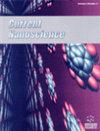Therapeutic Effect of Unmodified Gold-platinum Nanoparticles on Gouty Arthritis Via the Nrf2/HO-1 Pathway
IF 1.5
4区 材料科学
Q4 BIOTECHNOLOGY & APPLIED MICROBIOLOGY
引用次数: 0
Abstract
Background: Gouty arthritis, characterized by excruciating pain and discomfort, poses a significant burden on patients. While nanomedicines have shown promise in addressing this ailment, their complicated synthesis processes often involve potentially toxic procedures, contributing to adverse side effects in disease management. Methods: In this study, we introduce a straightforward and elegant solution by utilizing easily prepared gold platinum (AuPt) nanoparticles for the treatment of gouty arthritis. The synthesis of these nanoparticles involves the use of gold and platinum precursors in conjunction with NaBH4, simplifying the manufacturing process. Experimental models of gout were established in both in vivo and in vitro settings through lipopolysaccharide and monosodium urate crystal induction. Results: Our findings revealed that AuPt nanoparticles exhibited potent anti-inflammatory effects against gout. This effect was attributed to their ability to activate the Nrf2/HO-1 pathway, resulting in pain alleviation and the inhibition of inflammation, ultimately leading to the reduction of joint edema. With their uncomplicated synthesis and promising therapeutic potential, these simply prepared AuPt nanoparticles emerge as a compelling candidate for pharmaceutical intervention in the treatment of gouty arthritis. Conclusion: This approach not only holds the promise of delivering effective relief to patients but also minimizes the risk of unwanted side effects associated with complex nanomedicine synthesis processes.未修饰的金铂纳米粒子通过 Nrf2/HO-1 通路对痛风性关节炎的治疗效果
背景:痛风性关节炎以剧烈疼痛和不适为特征,给患者带来沉重负担。虽然纳米药物有望解决这种疾病,但其复杂的合成过程往往涉及潜在的毒性程序,从而导致疾病治疗中的不良副作用。方法:在本研究中,我们利用易于制备的金铂(AuPt)纳米粒子来治疗痛风性关节炎,从而提出了一种简单而优雅的解决方案。这些纳米粒子的合成涉及金和铂前体与 NaBH4 的结合使用,从而简化了生产过程。通过脂多糖和单钠尿酸盐晶体诱导,在体内和体外建立了痛风的实验模型。结果:我们的研究结果表明,AuPt 纳米粒子对痛风有很强的抗炎作用。这种效果归因于它们能够激活 Nrf2/HO-1 通路,从而缓解疼痛和抑制炎症,最终导致关节水肿的减轻。这些简单制备的 AuPt 纳米粒子的合成并不复杂,而且具有良好的治疗潜力,是治疗痛风性关节炎的药物干预的理想候选材料。结论:这种方法不仅有望为患者提供有效的缓解,还能最大限度地降低复杂的纳米药物合成过程所带来的副作用风险。
本文章由计算机程序翻译,如有差异,请以英文原文为准。
求助全文
约1分钟内获得全文
求助全文
来源期刊

Current Nanoscience
工程技术-材料科学:综合
CiteScore
3.50
自引率
6.70%
发文量
83
审稿时长
4.4 months
期刊介绍:
Current Nanoscience publishes (a) Authoritative/Mini Reviews, and (b) Original Research and Highlights written by experts covering the most recent advances in nanoscience and nanotechnology. All aspects of the field are represented including nano-structures, nano-bubbles, nano-droplets and nanofluids. Applications of nanoscience in physics, material science, chemistry, synthesis, environmental science, electronics, biomedical nanotechnology, biomedical engineering, biotechnology, medicine and pharmaceuticals are also covered. The journal is essential to all researches involved in nanoscience and its applied and fundamental areas of science, chemistry, physics, material science, engineering and medicine.
Current Nanoscience also welcomes submissions on the following topics of Nanoscience and Nanotechnology:
Nanoelectronics and photonics
Advanced Nanomaterials
Nanofabrication and measurement
Nanobiotechnology and nanomedicine
Nanotechnology for energy
Sensors and actuator
Computational nanoscience and technology.
 求助内容:
求助内容: 应助结果提醒方式:
应助结果提醒方式:


